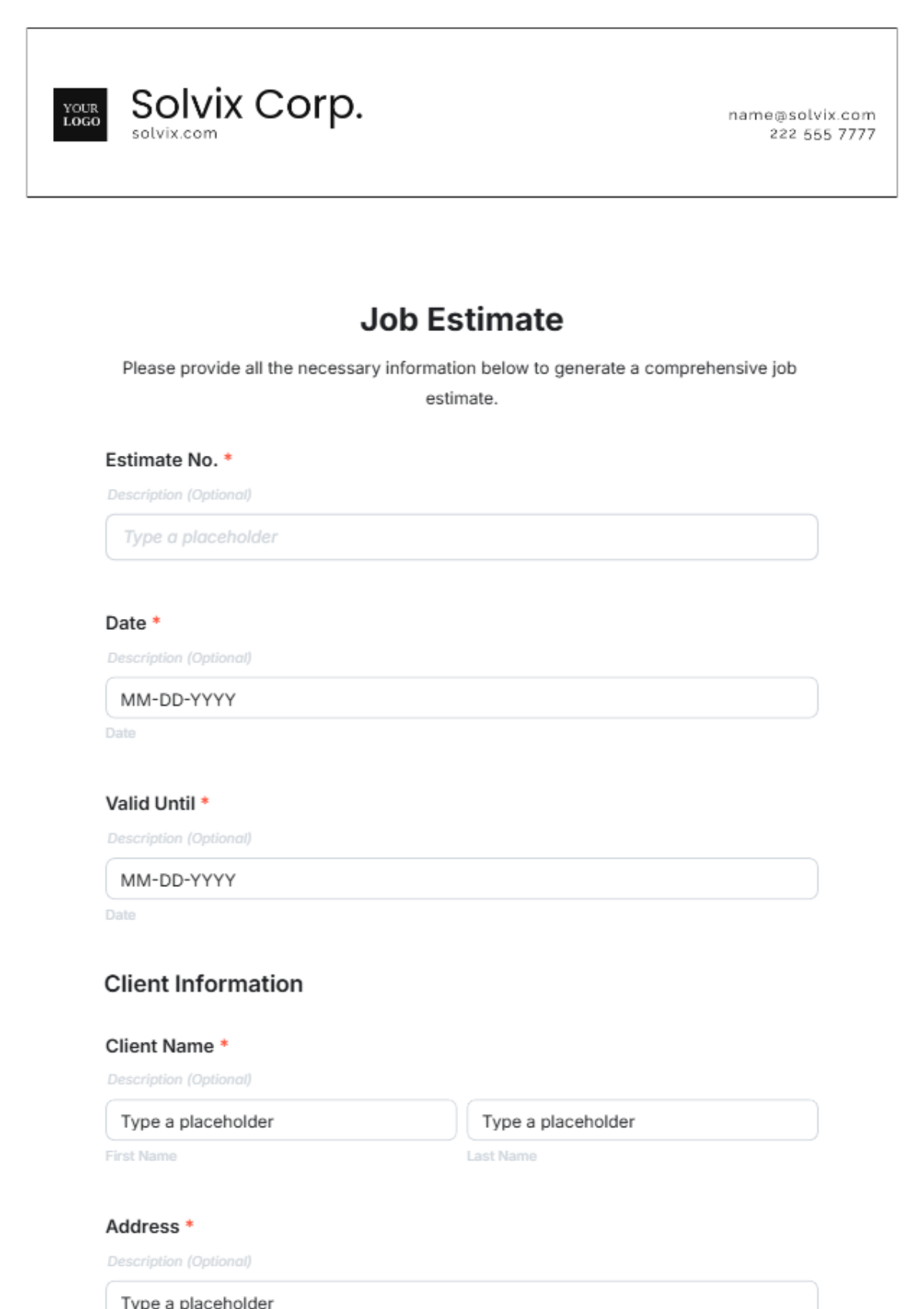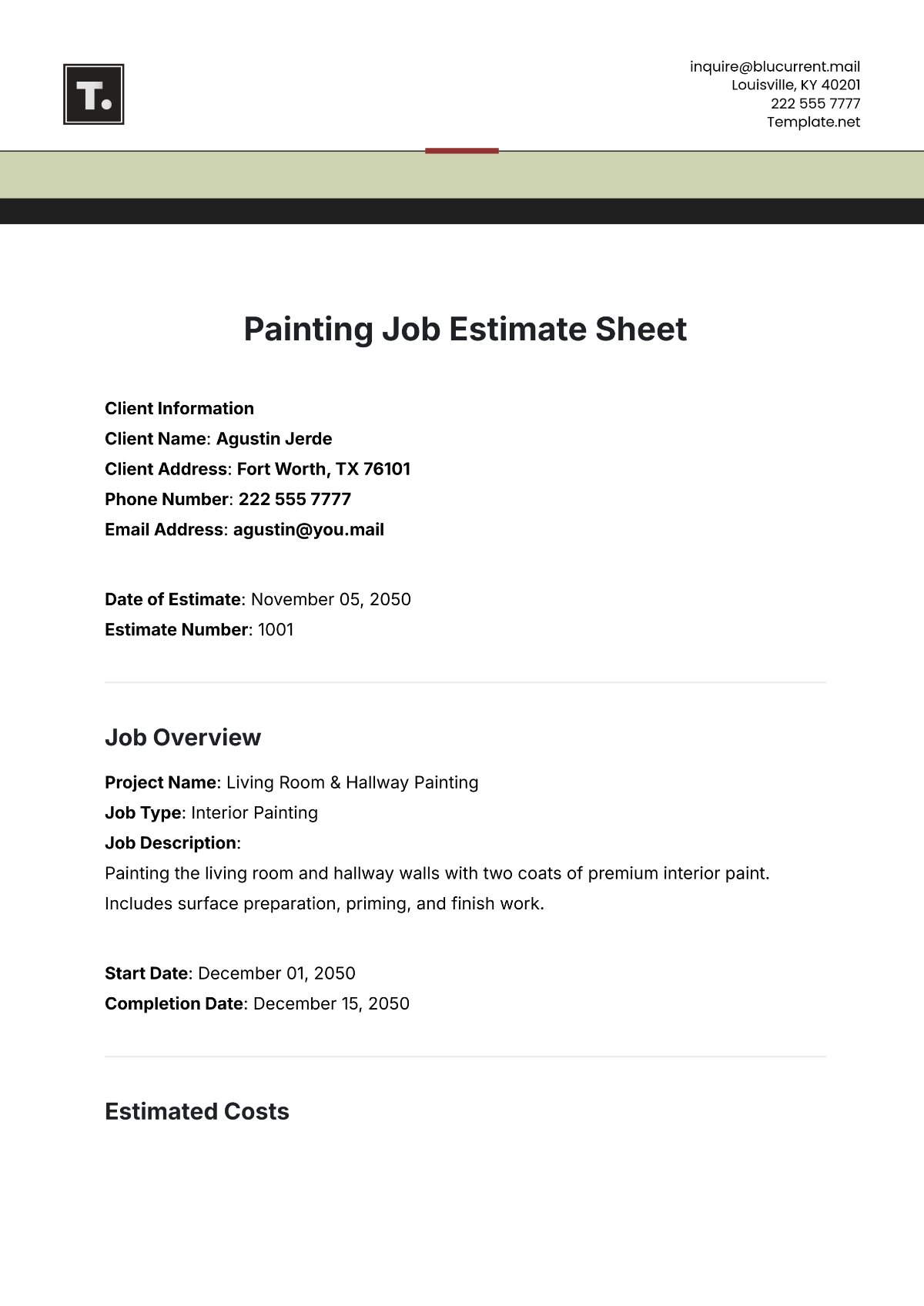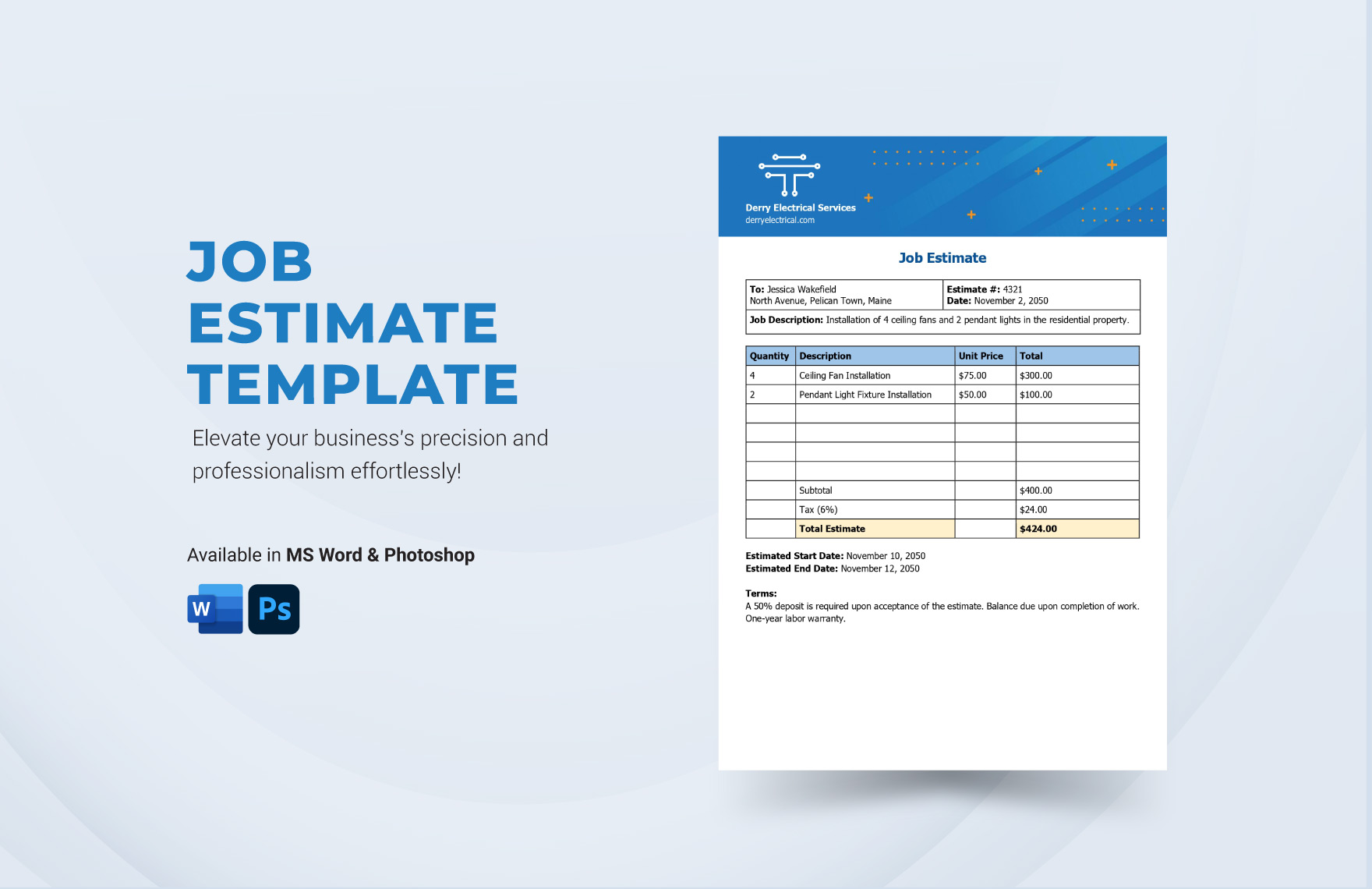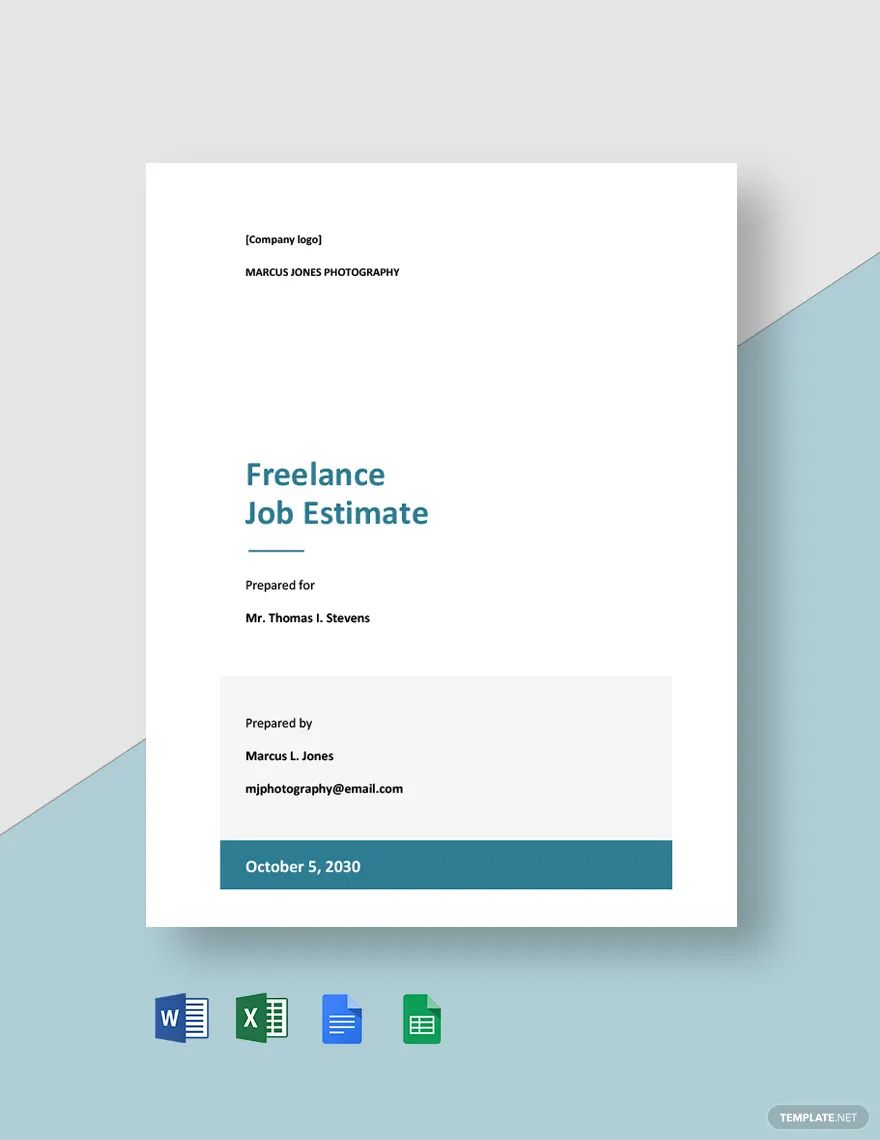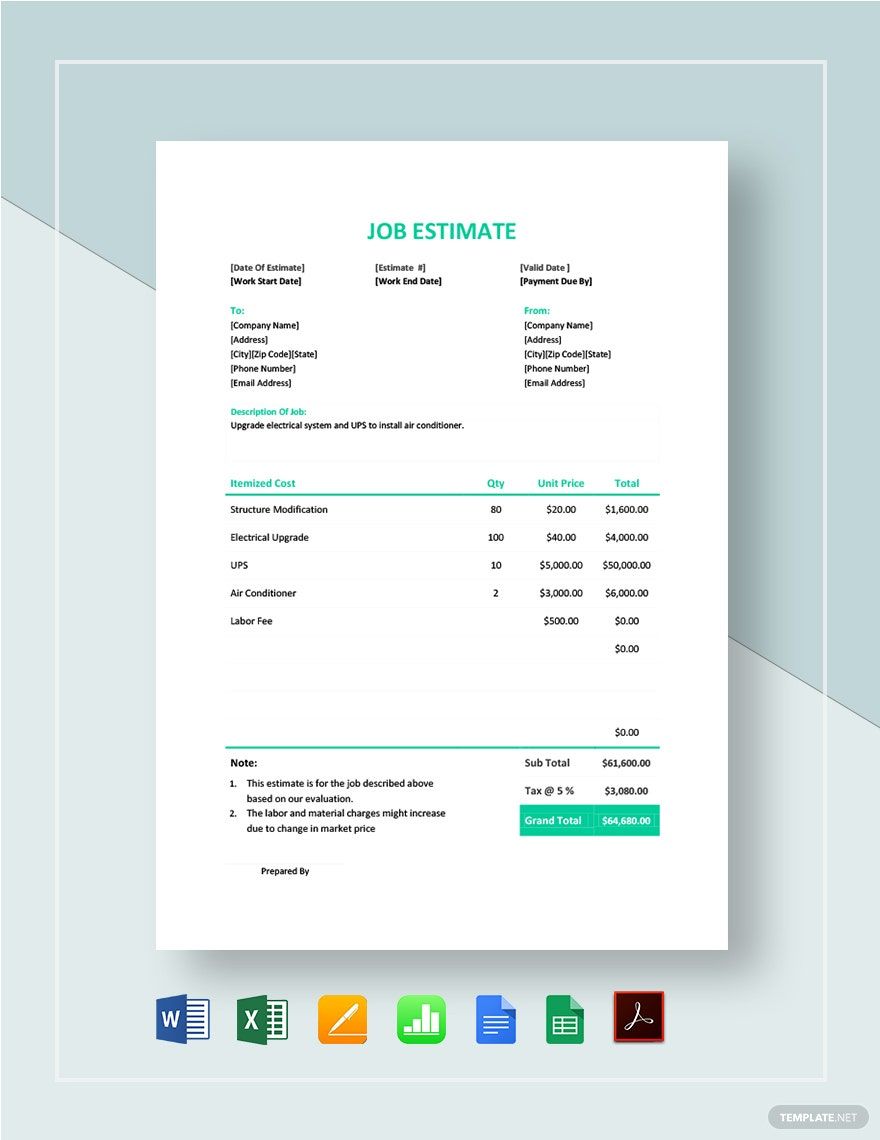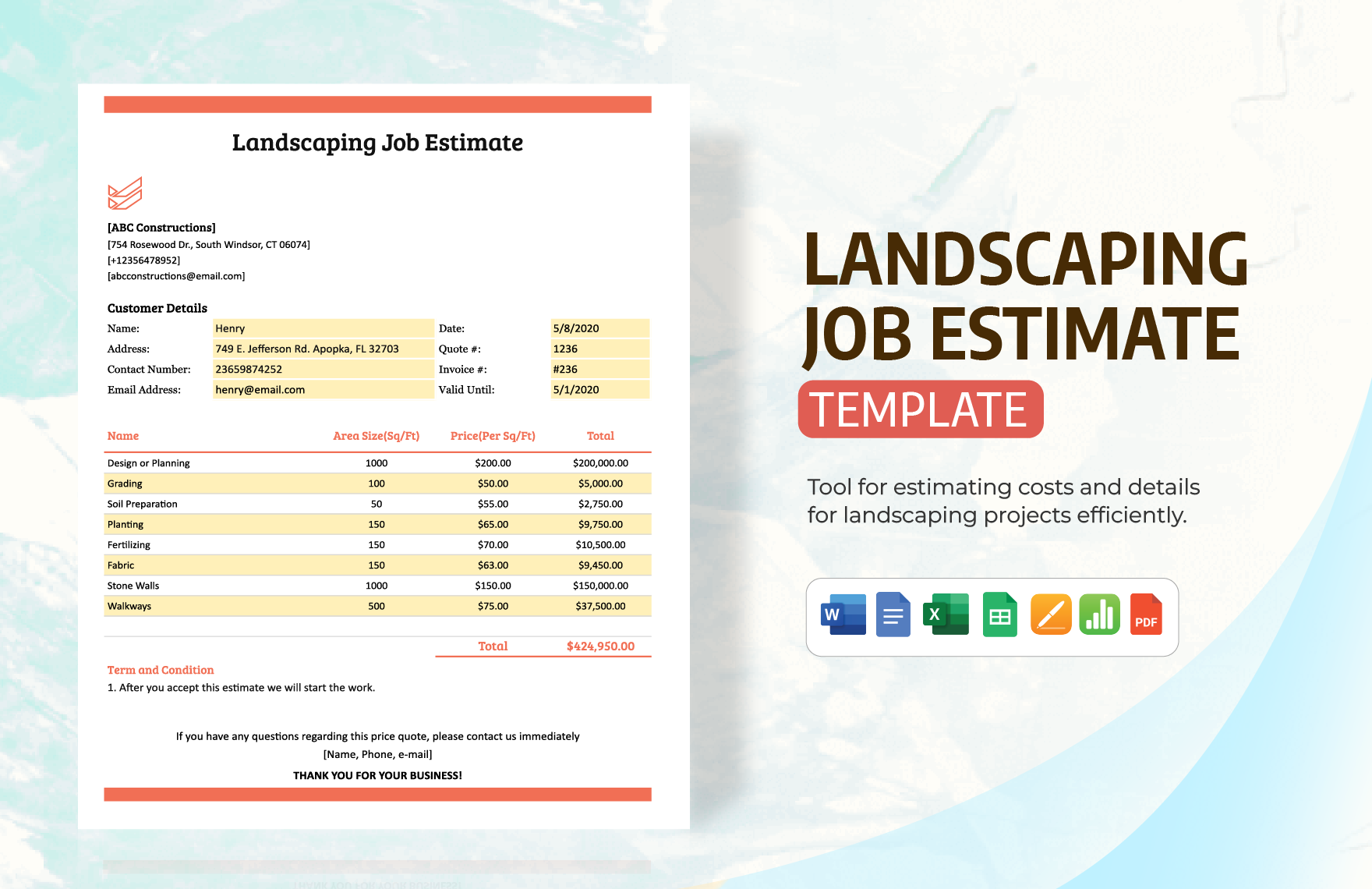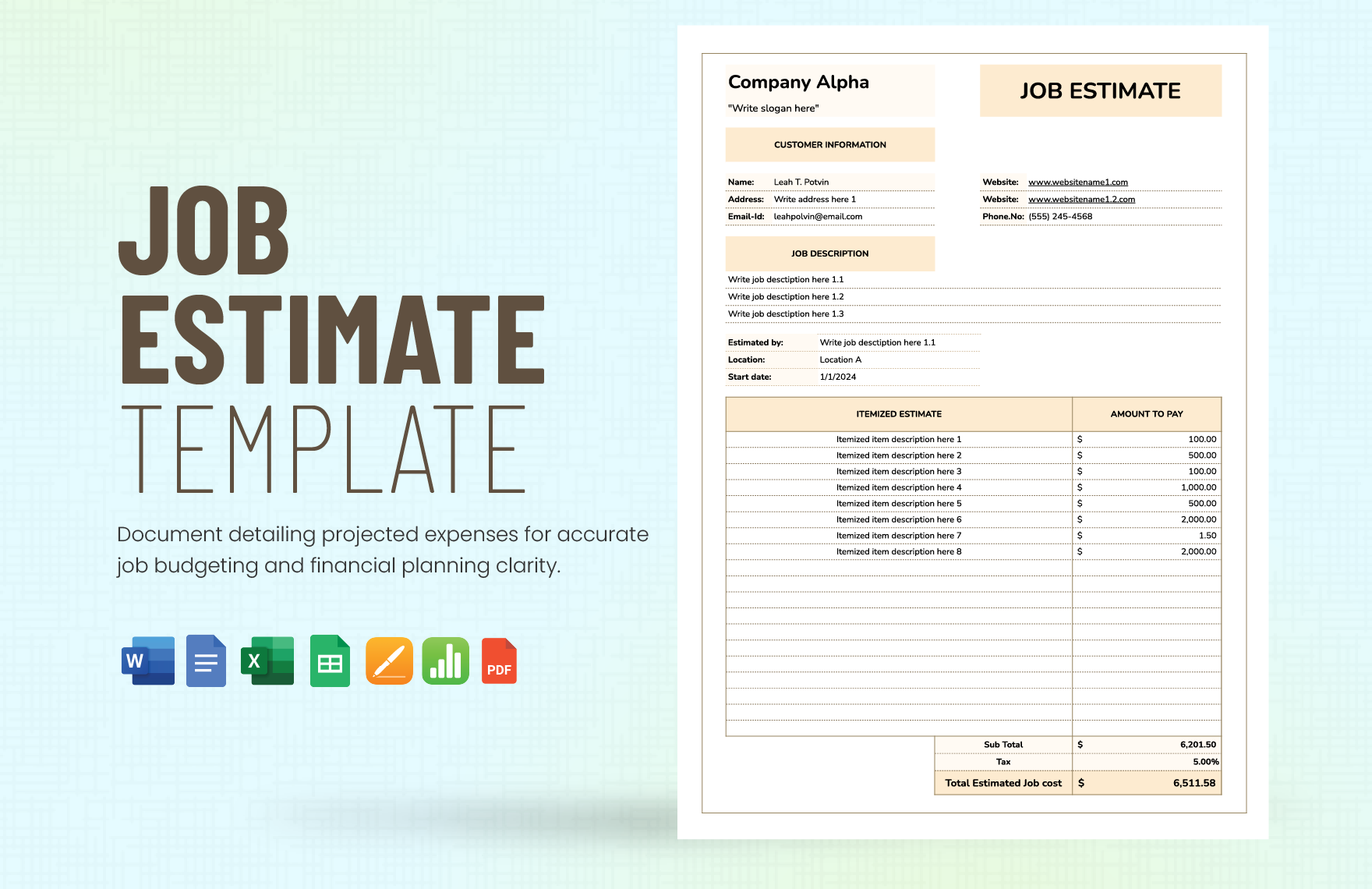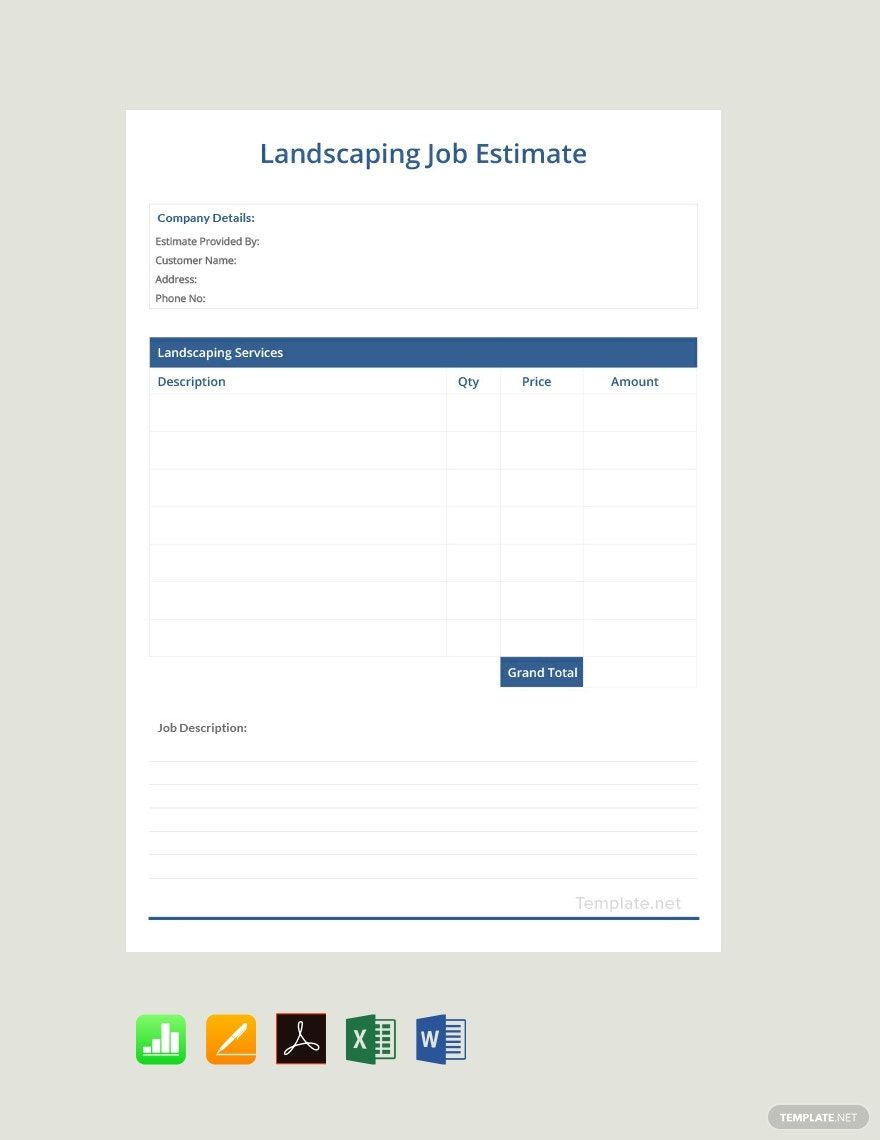Bring Your Project Management to Life with Job Estimate Templates from Template.net
Keep your project management on track and your clients impressed with Job Estimate Templates from Template.net. Perfect for project managers, contractors, and small business owners, these templates enable you to create professional estimates quickly. Use them to provide detailed cost breakdowns for a client's construction project or to outline service fees for an upcoming design project. Each template includes essential fields such as timeframes, client details, and cost estimates, ensuring you have everything you need to present an accurate and professional estimate. With no prior design skills required, you can seamlessly produce high-quality, customizable templates suitable for any business need, allowing you to focus more on what matters: growing your business.
Discover the many job estimate templates we have on hand, designed to maximize your efficiency and professionalism. Start by selecting a template that fits your project’s requirements, then easily swap in your own assets, tweaking colors and fonts to match your company branding. Enhance your templates by dragging and dropping icons or graphics, or add animated effects to make your estimate more engaging. With endless possibilities and no need for special skills, the design process is as enjoyable as it is efficient. Our regularly updated template library ensures that you have fresh and modern designs at your fingertips whenever needed. Once your estimate is ready, download it for print or share it digitally via email or link, ensuring your expert work reaches your client in the most convenient way possible.
